- Regulatory Status
- RUO
- Other Names
- Fibroblast interferon (Fi-IFN, F-IFN), Type-1 interferon, acid-stable interferon, R1-GI factor, IFN-β Pre-coated ELISA Kit
- Ave. Rating
- Submit a Review
- Product Citations
- publications
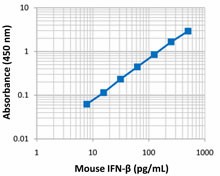
| Cat # | Size | Price | Quantity Check Availability | Save | ||
|---|---|---|---|---|---|---|
| 439407 | 1 Pre-coated Plate | 463€ | ||||
Interferon-β is a member of the type I interferon class. Type I IFNs are involved in the innate immune system, being released non-specifically during the early stage of infection in response to stimuli such as viruses, dsRNA, LPS, and bacterial components. Once secreted by virus-infected or activated cells, they bind to the IFNα/β receptor (IFNAR), which is found on almost all cell types. Then, via the JAK-STAT pathway, they induce the expression of hundreds of IFN-stimulated genes (ISGs). While the function of many of these proteins remains to be elucidated, a hallmark of type I IFNs is their anti-viral activities, both general and specific against particular viruses. Type I IFNs also regulate cell growth and apoptosis, and exert various immunomodulatory and inflammatory effects. As such, they are clinically relevant, both as therapeutics and as targets of inhibition for the treatment of various autoimmune diseases and cancer.
Mouse IFN-β is a ~20 kD monomeric glycoprotein. It has 50% amino acid sequence homology with mouse IFN-α, its closest related protein, and 62% homology with human IFN-β. IFN-β is currently the therapeutic of choice for treating multiple sclerosis.
BioLegend’s LEGEND MAX™ Mouse IFN-β ELISA Kit is a sandwich Enzyme-Linked Immunosorbent Assay (ELISA), in which, a specific antibody is pre-coated on a 96-well strip-well plate.
BioLegend’s LEGEND MAX™ Mouse IFN-β ELISA Kit is specifically designed for the accurate quantitation of mouse IFN-β from cell culture supernatant, serum, plasma or other bodily fluids. It is ready-to-use, accurate, and sensitive.
Kit Contents
- Kit Contents
-
- Anti-Mouse IFN-β Pre-coated 96-well Strip Microplate
- Mouse IFN-β Dectection Antibody
- Mouse IFN-β Standard
- Avidin-HRP D
- Matrix C (for serum and plasma samples only)
- Assay Buffer A
- Wash Buffer (20X)
- Substrate Solution F
- Stop Solution
- Plate Sealers
Product Details
- Verified Reactivity
- Mouse
- Application
-
ELISA
- Application References
- Product Citations
-
- Sensitivity
- 1.9 pg/mL
- Standard Range
- 7.8-500 pg/mL
- Materials Not Included
-
- Microplate reader able to measure absorbance at 450 nm
- Adjustable pipettes to measure volumes ranging from 1 µL to 1,000 µL
- Deionized water
- Wash bottle or automated microplate washer
- Log-Log graph paper or software for data analysis
- Tubes to prepare standard dilutions
- Timer
- Plate Shaker
- Polypropylene vials
Antigen Details
- Cell Sources
- Fibroblasts, epithelial cells
- Biology Area
- Apoptosis/Tumor Suppressors/Cell Death, Cell Biology, Signal Transduction
- Molecular Family
- Cytokines/Chemokines
- Gene ID
- 15977 View all products for this Gene ID
- UniProt
- View information about IFN-beta on UniProt.org
Related Pages & Pathways
Pages
Related FAQs
- In your LEGEND MAX™ ELISA Kits, there is a step that calls for washing the plates before adding sample. What is the purpose of this step?
-
We typically use a stabilizer for pre-coated plates. The additional washing step is designed to remove these components before you start the assay. If you do not perform the washing, the effect on assay performance is negligible.
- I have multiple LEGEND MAX™ ELISA kits that I want to run simultaneously. Can I use the same wash buffer for all the kits?
-
The wash buffer provided in all our LEGEND MAX™ kits is the same and the part numbers on the wash buffer bottles in these kits should be identical. For ELISA MAX™ Deluxe and ELISA MAX™ Standard Sets, we provide a recipe for the wash buffer on each kit’s technical data sheet. This recipe is the same for all ELISA MAX™ sets.
- For some of your ELISA kits, why do my serum samples require dilution with assay buffer?
-
In some cases, dilution with assay buffer is required to minimize the matrix difference between the samples and the standards to achieve better accuracy.

 Login / Register
Login / Register 






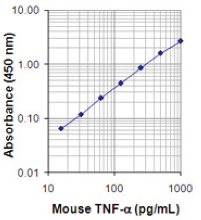
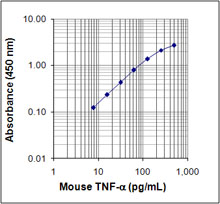
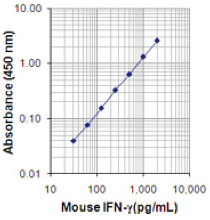
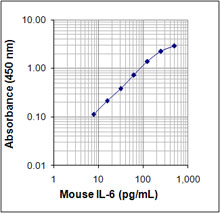



Follow Us